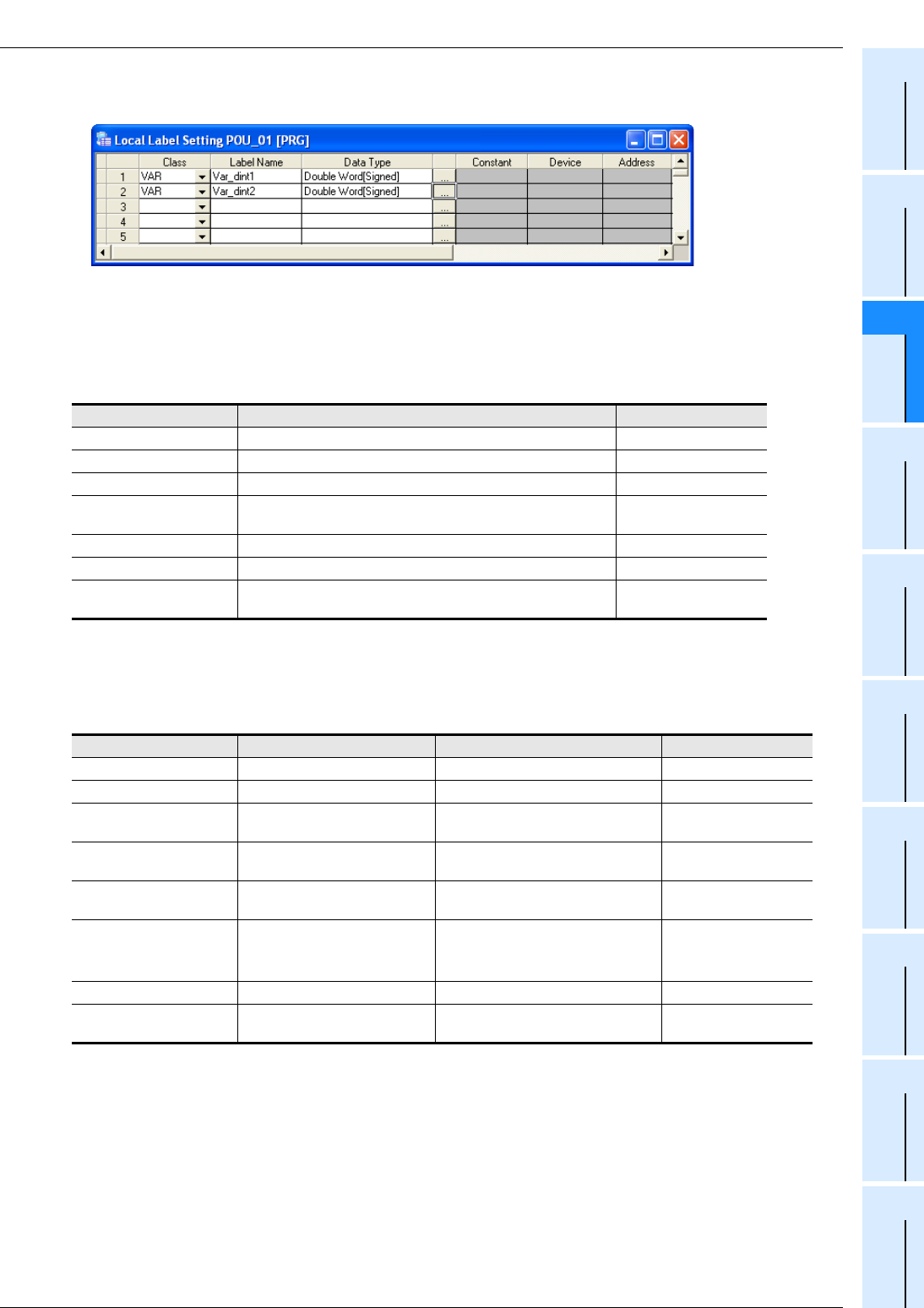
3 Configuration of Instruction
3.2 Labels
45
FXCPU Structured Programming Manual
[Basic & Applied Instruction]
1
Outline
2
Instruction List
3
Configuration of
Instruction
4
How to Read
Explanation of
Instructions
5
Basic Instruction
6
Step Ladder
Instructions
7
Applied Instructions
(Program Flow)
8
Applied Instructions
(Move and
Compare)
9
Applied Instructions
(Arithmetic and
Logical Operation)
10
Applied Instructions
(Rotation and
Shift Operation)
• When using as a local label:
Set the class, label name and data type.
Expressing constants
The following describes the method of expression when setting constant to a label.
Data type
The data type of label is either basic data type or universal data type.
• The table below lists the basic data types.
Type of constant Method of expression Example
Bit Enter either "FALSE" or "TRUE", or either "0" or "1". TRUE, FALSE
Binary number Add "2#" before the binary number. 2#0010, 2#01101010
Octal number Add "8#" before the octal number. 8#0, 8#337
Decimal number
Enter the decimal number directly. Or, add "K" before the decimal
number
123, K123
Hexadecimal number Add "16#" or "H" before the hexadecimal number. 16#FF, HFF
Real number Enter the real number directly. Or, add "E" before the real number. 2.34, E2.34
Character string
Put the character string between single quotations ('') or double
quotations ("").
'ABC', "ABC"
Data type Description Value range Bit length
Bit Boolean data 0(FALSE), 1(TRUE) 1 bit
Word [signed] Integer -32768 to 32767 16 bits
Double Word [signed] Double precision integer
-2147483648 to
2147483647
32 bits
Word [unsigned]/Bit String
[16-bit]
16-bit data 0 to 65535 16 bits
Double Word [unsigned]/Bit
String [32-bit]
32-bit data 0 to 4294967295 32 bits
FLOAT (Single Precision) Real number
E ±1.175495
-38
to
E ±3.402823
+38
(Number of significant figures: 6)
32 bits
String Character string (50 characters maximum) Variable
Time Time value
T#-24d-0h31m23s648.00ms to
T#24d20h31m23s647.00ms
32 bits


















